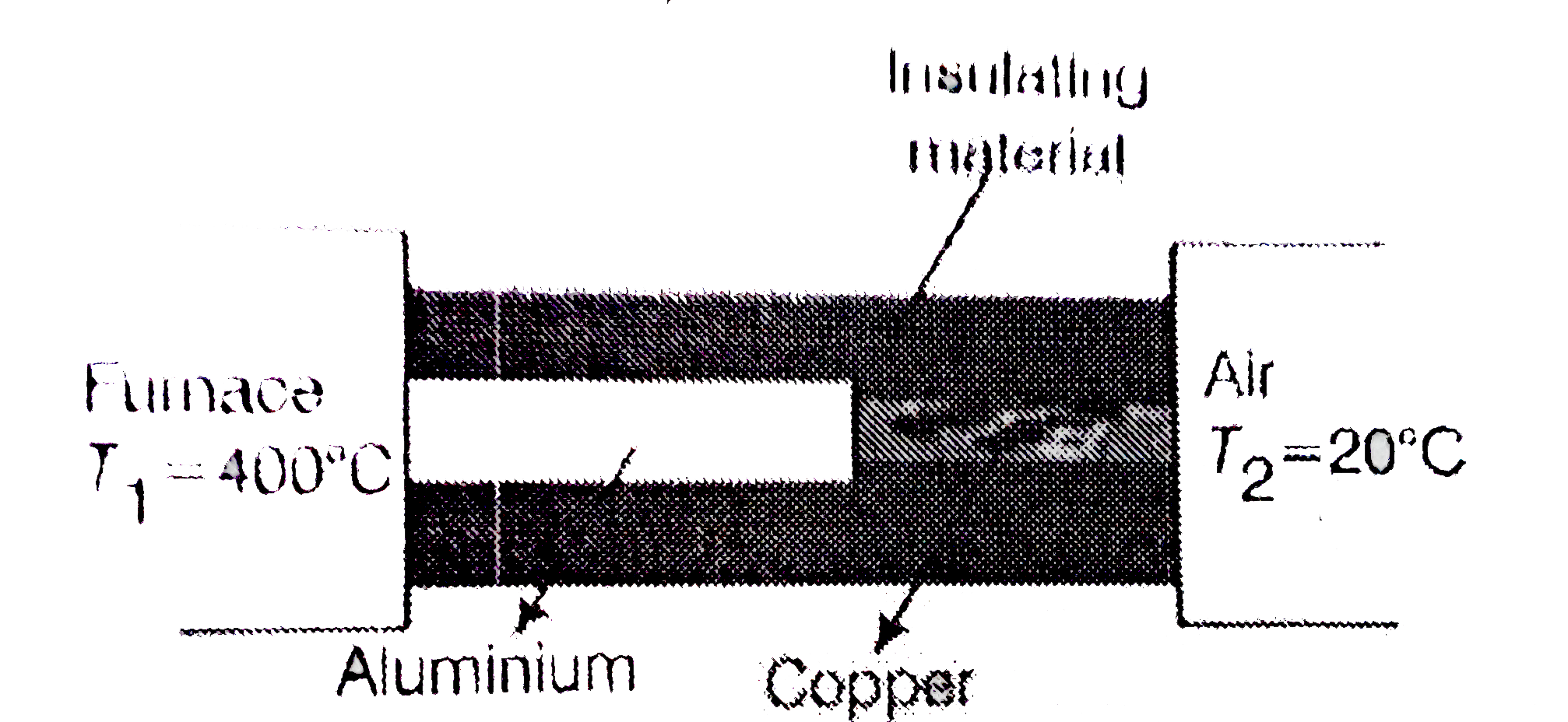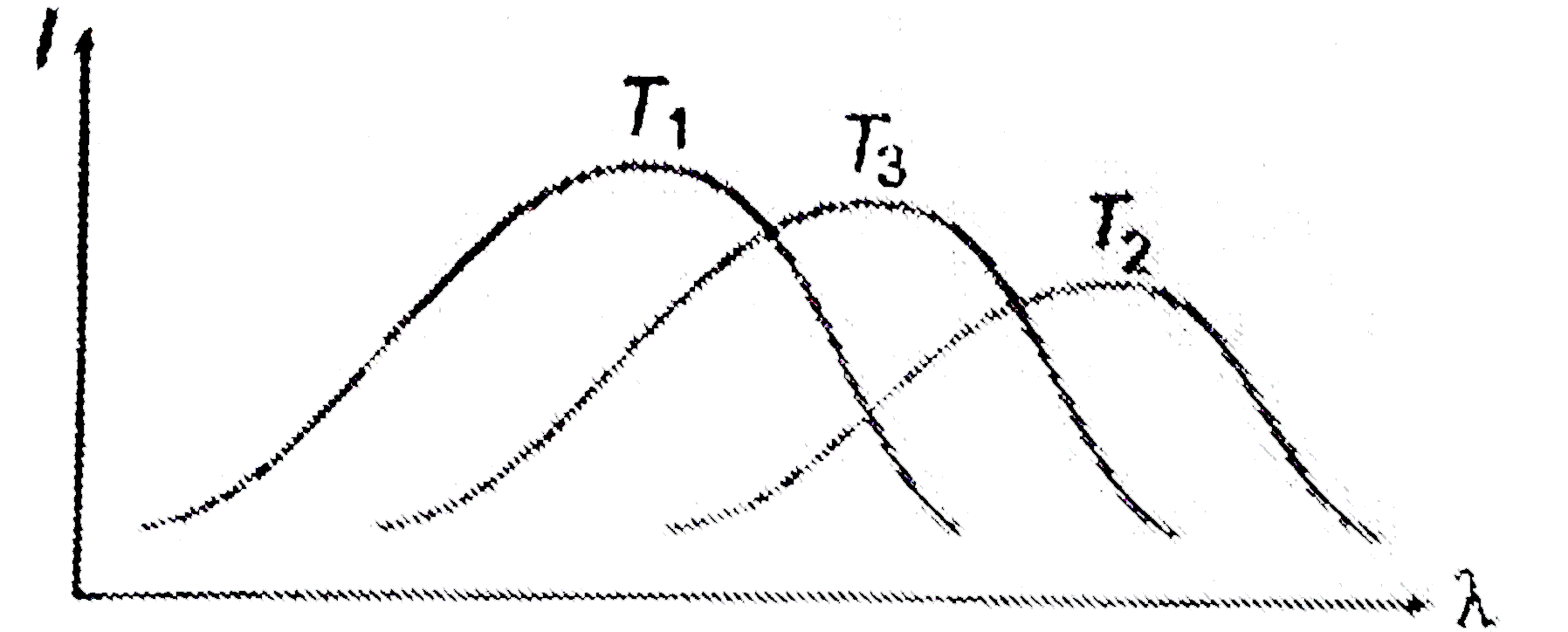Complete Solutions to All Questions of chapter TRANSMISSION of Class 11 book with complete answers and questions
| Class 11 | PHYSICS |
| Chapter | TRANSMISSION |
| BITSAT GUIDE | All Questions |
| Number Of Questions | 38 |
| Academic Year | 2023-24 |
One end of a metal rod is kept in a furnace. In steady state, the temperature of the rod
View SolutionCalculate the daily loss of energy by the earth, if the temperature gradient in the earth's crust is `32^(@)C` per km and mean conductivity of the rock is `0.008` of CGS unit. (Given radius of earth `=6400km`)
View SolutionCylinder rod of copper of length `2m` and cross-sectional area `2cm^(2)` is insulated at its curved surface. The one end of rod is maintained in steam chamgber and other is maintained in ice at `0^(@)C` (The thermal coductivity of copper is `386J//m-s .^(@)C`). Find the temperature at a point which is at a distance of `120cm` from the colder end.
View SolutionCylinder copper rod of length `1m` and a cylinder steel rod of length `1.5m` are joined together end to end. The cross sectional area of eac rod is `3.14cm`. The free ends of steel rod and copper rods are maintained at `0^(@)C` and `100^(@)C` respectively. The surfaces of rods are thermally insulated. Find the temperature of copper steel junction. (Given thermal conductivity of steel `=46J//m-s.^(@)C` and the thermal conductivity of copper `=386J//m-s.^(@)C`)
View SolutionA block of ice at `0^(@)C` rest on the upper surface of the slab of stone of area `3600cm^(2)` and thickness of `10cm`. The slab is exposed on the lower surface to steam at `100^(@)C`. If `4800g` of ice is melted in one hour, then calculate the thermal conductivity of stone.
(Given the latent heat of fusion of ice `=80cal//g`)
View SolutionThe ice is filled in a hollow glass sphere of thickness `2mm` and external radius `10cm`. This hollow glass sphere with ice now placed in a bath containing boiling water at `100^(@)C`. Calculate the rate at which ice melts. Neglect volume change in ice.
(Given, thermal conductivity of glas `1.1W//m//K`, latent heat of ice `=336xx10^(3)J//kg)`
View Solution`5cm` thick walls of a box like cooler is made of plastic toam. Its total surface area is `1.5m^(2)`. If outside temperature is `30^(@)C`, then how much ice melts each hour inside the cooler to old its temperature at `0^(@)C`.
(Given `K` for plastic `=0.04W//mK, L_(0)=80cal//g` and `1kcal=4.184kJ//kcal`)
View SolutionIf in two identical containers, equal quantities of ice melts completely in 30 and 20 minutes respectively, then find the ratio of the thermal conductivities of the material of two containers.
View SolutionA compound rod is formed of a steel core of diameter `1cm` and outer casing is of copper, whose outer diameter is `2cm`. The length of this compound rod is `2m` and one end is maintained as `100^(@)C` and the end is at `0^(@)C`. If the outer surface of the rod is thermally insulated, then heat current in the rod will be (Given thermal conductivity of steel `j=12cal//m//k//s`, thermal conductivity of copper `=92cal//m//k//s`
View SolutionAn aluminium rod of length `L` and cross-sectional area `2A` is joined with a copper rod of length `2L` and area of cross-section is `A` as shown in figure. Find the temperature of aluminium-copper junction in the steady state of the system.

Given thermal conductivity `K_(Al)=240J//m//s//.^(@)C, K_(Cu)=400J//m//s//.^(@)C`
View SolutionA uniform metal ring with centre `C` have two points `A` and `B` such that angle `ACB` is `theta`. `A` and `B` are maintained at two different constant temperature.
If the angle between `A` and `B` i.e. `theta=180^(@)` the rate of heat flow from `A` and`B` is `1.2W`, then what will be the rate, when `theta=90^(@)`?
View SolutionWhat amount of ice at `-14^(@)C` required to cool `200gg` of water from `25^(@)C` to 10CC?
(Given `C_("ice")=0.5cal/g.^(@)C,L_(f)` for ice `=80cal//g`)
View SolutionA metallic sphere having inner and outer radii `a` and `b` respectively has thermal conductivity
`K=(K_(0))/r (alerleb)`
Find the thermal resistance between inner surface and outer surface.
View SolutionA body cools from `60^(@)C` to `50^(@)C` in 10 minutes . If the room temperature is `25^(@)C` and assuming Newton's law of cooling to hold good, the temperature of the body at the end of the next 10 minutes will be
View SolutionFind the time in which a layer of ice thickness `h` will grow on the surface of the pond of surface area `A`, when the surrounding temperature falls to `-T^(@)C`.
(Assume `K=` thermal conductivity of ice, `rho-` densityy of water `L=` latent heat of fusion)
View SolutionA black body maintained at a certain temperature radiates heat energy at the rate `Q` watt. If its surface is smoothened so as to lower its emissivitiy by 10%, what will be the increase in its rate of radiation at double the initial temperature?
View SolutionThe thermal radiation emitted by a body per second per unit area is `(DeltaH)/(A Deltat)=kT^(4)`. If `sigma` is Stefan's constant, then body
View SolutionIf temperature of black body increases from `300K` to `900K`, then the rate of energy radiation increases by
View SolutionThree objects coloured black, gray and white can withstand hostile conditions upto `2800^(@)C`. These objects are thrown into a furance where each of them attains a temperature of `2000^(@)C`. Which object will glow brightest?
View SolutionThe power `P` is received by a surface at temperature `T_(0)K` from a small sphere at temperature
View SolutionA cylindrical rod having temperature `T_(1)` and `T_(2)` at its ends. The rate of flow of heat is `Q_(1) cal//sec`. If all the linear dimensions are doubled keeping temperature constant, then rate of flow of heat `Q_(2)` will be
View SolutionAssuming the Sun to be a spherical body of radius R at a temperature of TK, evaluate the total radiant powered incident of Earth at a distance r from the sun
where `r_0` is the radius of the Earth and `sigma` is Stefan's constant.
View SolutionWhat will be the increment in heat energy radiated when the temperature of hot body is raised by 5%?
View SolutionTwo spheres of the same material having radii `r` and `4r` and temperature `2T_(0)` and `T_(0)` respectively. The ratio of rate of radiation of energy by the sphere is
View SolutionA sphere a cube and a thin circular plate all of same material having same mass are initially heated to `200^(@)C`. Which of these will cool fastest?
View SolutionA body at a temperature of `727^(@)C` and having surface area `5 cm^(2)`, radiations `300 J` of energy each minute. The emissivity is(Given Boltzmann constant `=5.67xx10^(-8) Wm^(-2)K^(-4)`
View SolutionChoose the correct relation, when the temperature of an isolated black body falls from `T_(1)` to `T_(2)` in time `'t'` and assume `'c'` to be a constant.
View SolutionThe temperature and the surface area of the body are `227^(@)C` and `0.15 m` respectively. If its transmitting power is negligible and reflecting power is `0.5`, then calculate the thermal power of the body.
(Given `sigma-5.67xx10^(-4)J//m^(2)//s//K`)
View SolutionThe surface temperature of the sun is `'T'K` and the solar constant for a plte is `'s'`. The sun subtends an angle `theta` at the planet. Then,
View SolutionWhen a blackened platium wire is heated gradually, it apears
View SolutionSurface temperature of the sun as estimate is `6032.25K`. Find the wavelength at which sun radiates maximum energy (Given, Wien's constant `=0.2898cm-k`)
View SolutionThe plots of intensity of radiation versus wavelength of 3 black bodies of temperatures `T_(1), T_(2)` and `T_(3)` as shown in the figure, then

View SolutionA partition wall has two layers of different materials A and B in contact with each other. They have the same thickness but the thermal conductivity of layer A is twice that of layer B. At steady state the temperature difference across the layer B is 50 K, then the corresponding difference across the layer A is
View SolutionThe rate at which a black body emits radiation at a temperature `T` is proportional to
View SolutionA hot and a cold body are kept in vacuum separated from each other. Which of the following cause decrease in temperature of the hot body
View SolutionIn a 10 m deep lake, the bottom is at a constant temperature of `4^(@)C`. The air temperature is constant at `- 4^(@)C. K_(ice) = 3 K_(omega)`. Neglecting the expansion of water on freezing, the maximum thickness of ice will be
View SolutionTwo slabs `A` and `B` of equal surface area are placed one over the other such that their surfaces are completely in contact. The thickness of slab `A` is twice that of `B`. The coefficient of thermal conductivity of slab `B` is maintained at `25^(@)C`. The temperature at the contact of their surface is
View SolutionThe wavelength of radiation emitted by a body depends upon
View Solution
All Questions questions and complete solutions for chapter TRANSMISSION of BITSAT GUIDE PHYSICS (HINGLISH) of Class 11